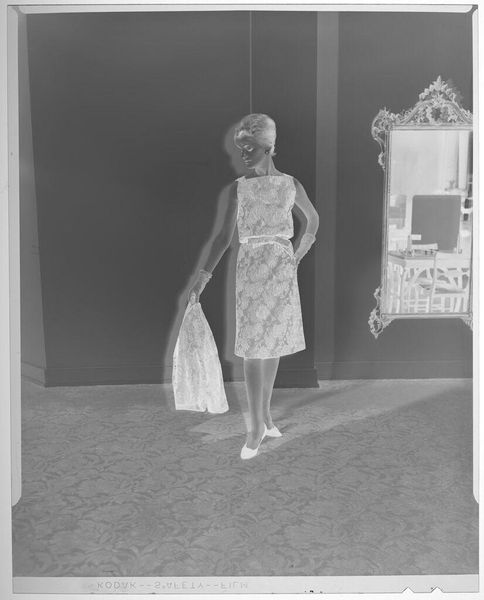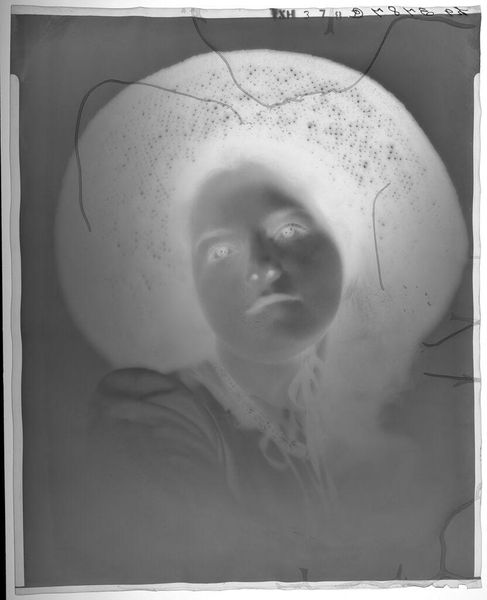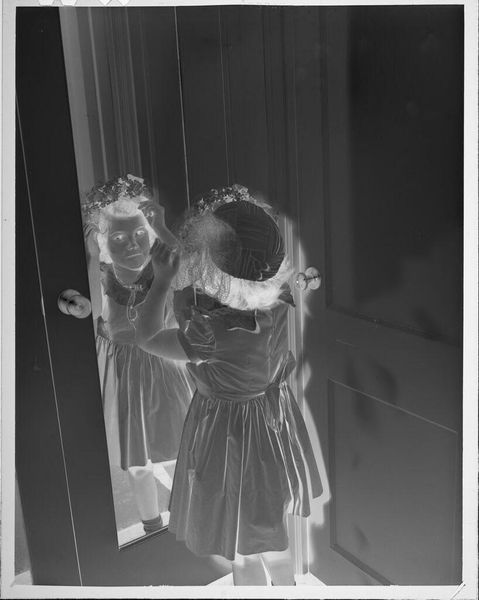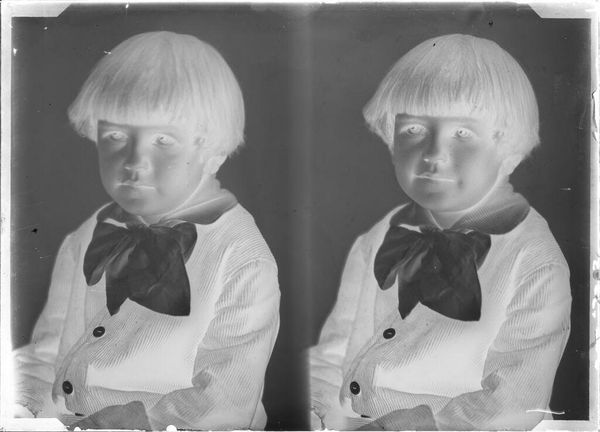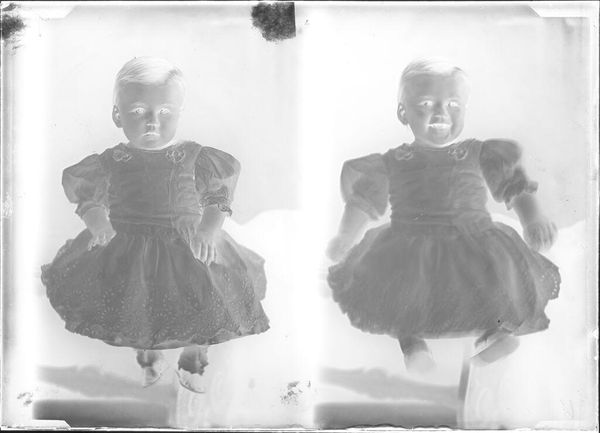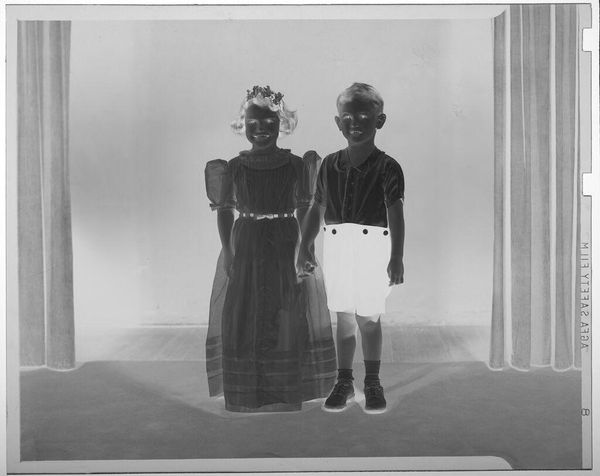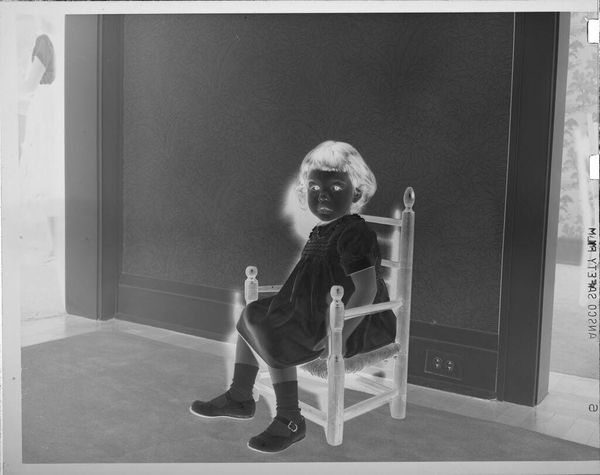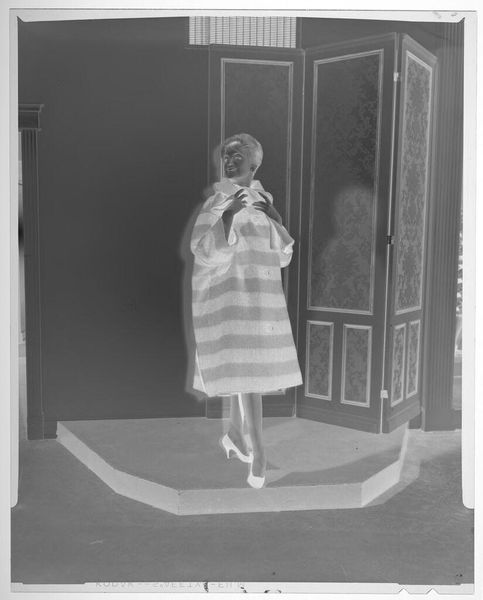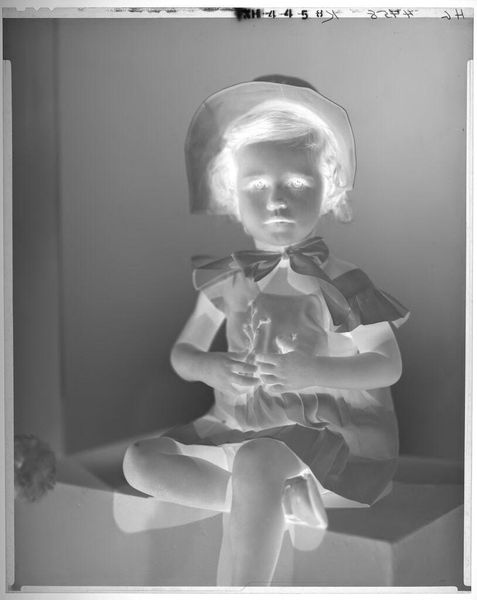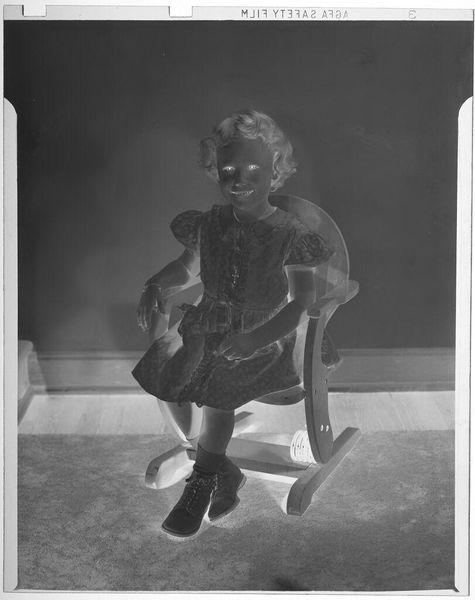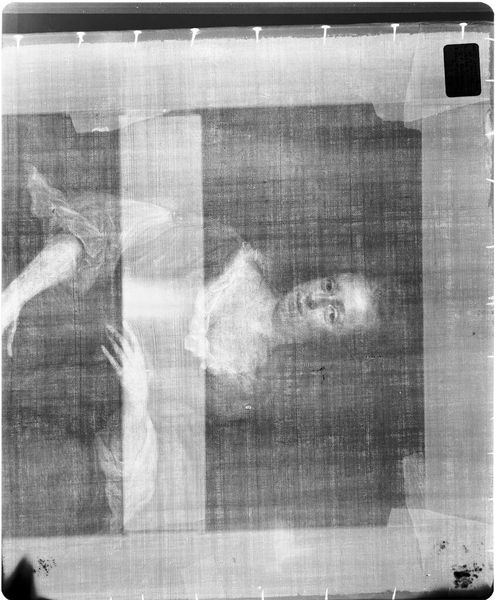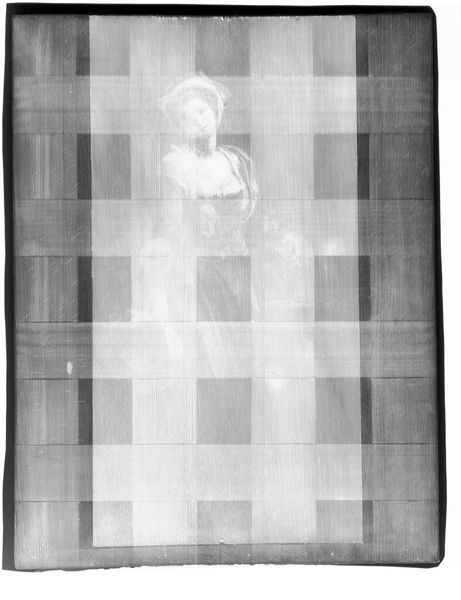
photography
#
portrait
#
contemporary
#
black and white photography
#
black and white format
#
figuration
#
b w
#
photography
#
black and white
Copyright: Nieves Mingueza,Fair Use
Curator: Looking at Nieves Mingueza’s piece from 2014, a photographic work titled “A Family Book,” I am struck by its simultaneous evocation of history and unsettling modernity. What do you see in it? Editor: Honestly, I see a ghost story waiting to happen. It's this blurry, almost spectral child against a backdrop that feels like it's straight out of someone's attic. Melancholy, for sure, and a bit spooky. Curator: The visual effect is intriguing, isn’t it? Notice how Mingueza obscures the face of the subject using what seems to be the very wallpaper that acts as the backdrop. Faces have always been a crucial component of family portraits. Editor: Yeah, it's like the child's identity has been consumed, almost overwritten, by the patterns and textures of domesticity itself. What could that even mean? Are they trapped or protected? Curator: Perhaps it speaks to how individual identities, especially those of women and children, have historically been subsumed within the domestic sphere and within broader family narratives. Patterns within our living spaces can sometimes imprint themselves on our psyches too. Editor: Subsumed… right. I get this sense, though, that this could also be a visual poem about the unreliable nature of memory, a childhood face dissolving back into the familiar settings that framed it. You know, how you try to remember and it’s always a little blurry? Curator: An insightful reading. This merging also prompts reflection on collective and individual histories and what remains and fades across generations. I am also interested in the choice to shoot the work in black and white, lending to its feeling of historical removal and the aesthetics of something antique and unearthed. Editor: Black and white is totally key. Color would shatter the spell, don’t you think? But also, beyond the historical vibe, there’s something almost futuristic about it – this erasure, this faceless figure. Maybe it’s saying something about surveillance and identity in the digital age, too. Overwritten again, by different tech! Curator: An interesting tension emerges. As a photograph and portrait, this raises powerful questions about what family means across time, or what happens when portraits don’t function as they traditionally do—to preserve and to commemorate. Editor: In the end, though, I think it all circles back to this core human thing. A longing and an attempt to grasp something slipping away. A lost memory, a forgotten face, childhood, whatever… and that image is gorgeous in expressing such fragility.
Comments
No comments
Be the first to comment and join the conversation on the ultimate creative platform.
